Morocco was in the news at the end of 2014 because of the worst floods in 30 years so the rain was no surprise when we touched down in Marrakech last month. The complete rainbow was unexpected though: a fine welcome and augur of an excellent trip. Then as we emerged from the airport building, taxi-touts surrounded us and we weren’t so sure. We’d read inside that the fare into Marrakech should cost 70 dirham. The tout asked 300. We looked theatrically appalled, but how to say 70 in French? I tried to stimulate some neurones. French numbers are daft. Why the hell is 80 quatre vingt, for example? Fifty is cinquante, so sixty surely should be sextant (now that sounds too like sexy aunt) and seventy must be septante. No, that didn’t sound at all familiar. I gave up, realising that I couldn’t do bargaining while struggling to translate into French. I suggested 100, and having set a slightly inflated price the driver was delightful and smilingly ushered us into his taxi.
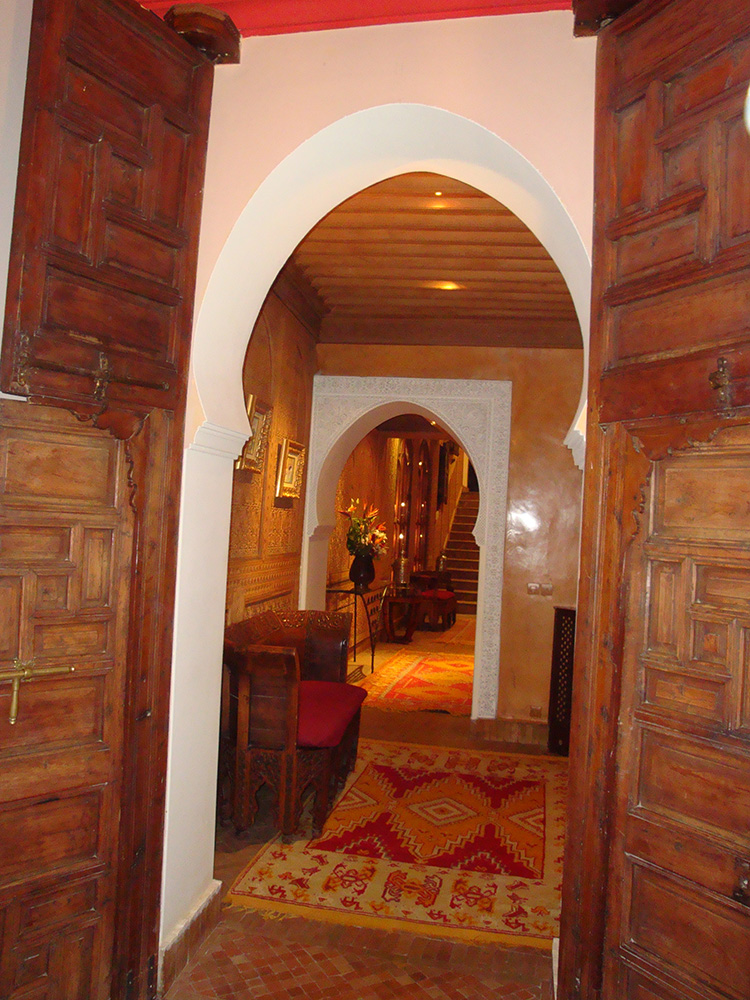
Fatima’s tasselled hand dangled from the windscreen. Clearly she was already ensuring this driver’s good fortune. Fatima, we were soon to learn, brings wealth – like Laxmi or the tooth fairy.
The driver dropped us at an alley leading to our sumptuous riad, La Maison Arabe.
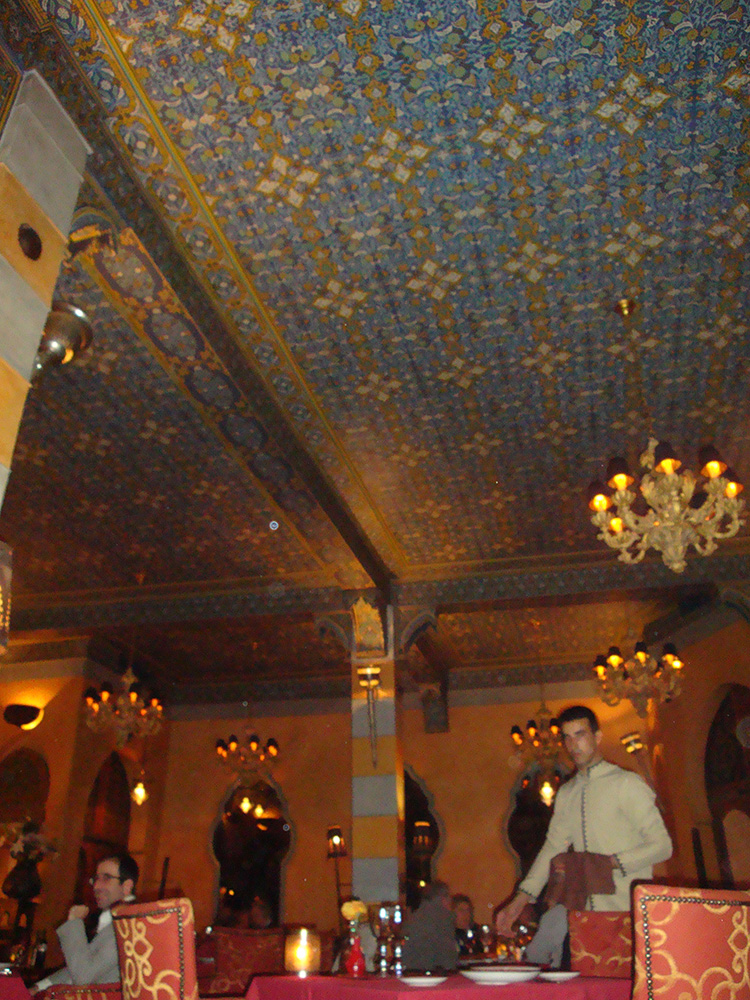
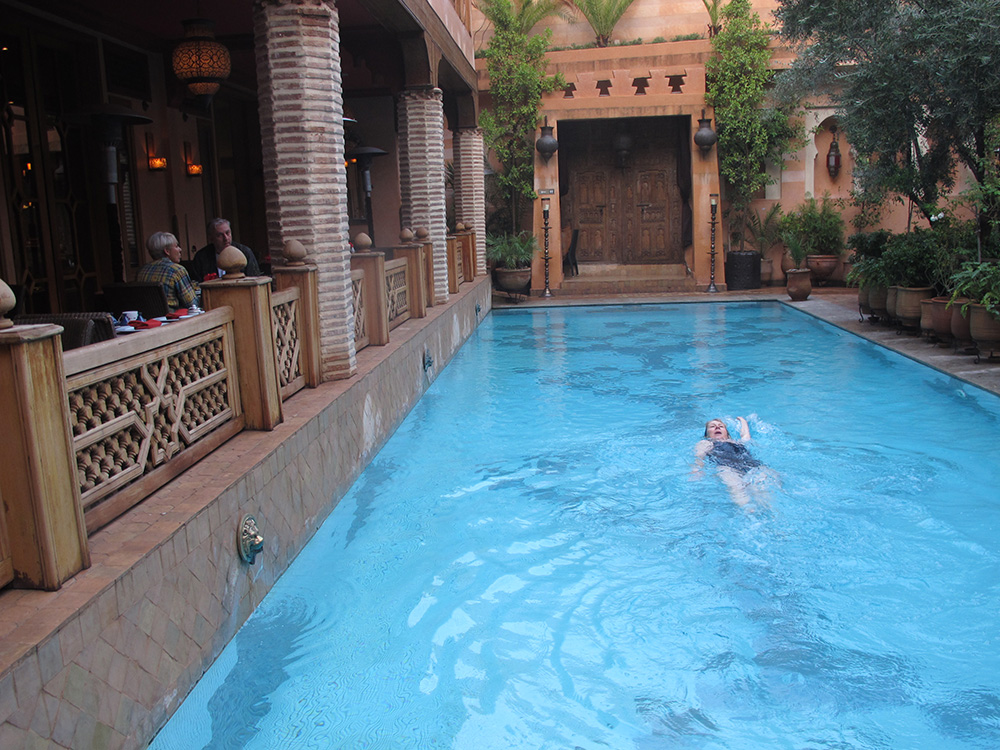
The next part of our Moroccan welcome was the following morning. We woke to the first call to prayer at 04.40am against a background of over-excited house sparrows having a cheeping contest in the courtyard tree outside our window. Breakfast was attended by cheeky little house buntings, a species I’d not met before, about the size of a sparrow, totally lacking fear and present wherever food was to be scrounged. Individuals swept in from the bougainvillea to pluck crumbs from around our plates and under our feet.
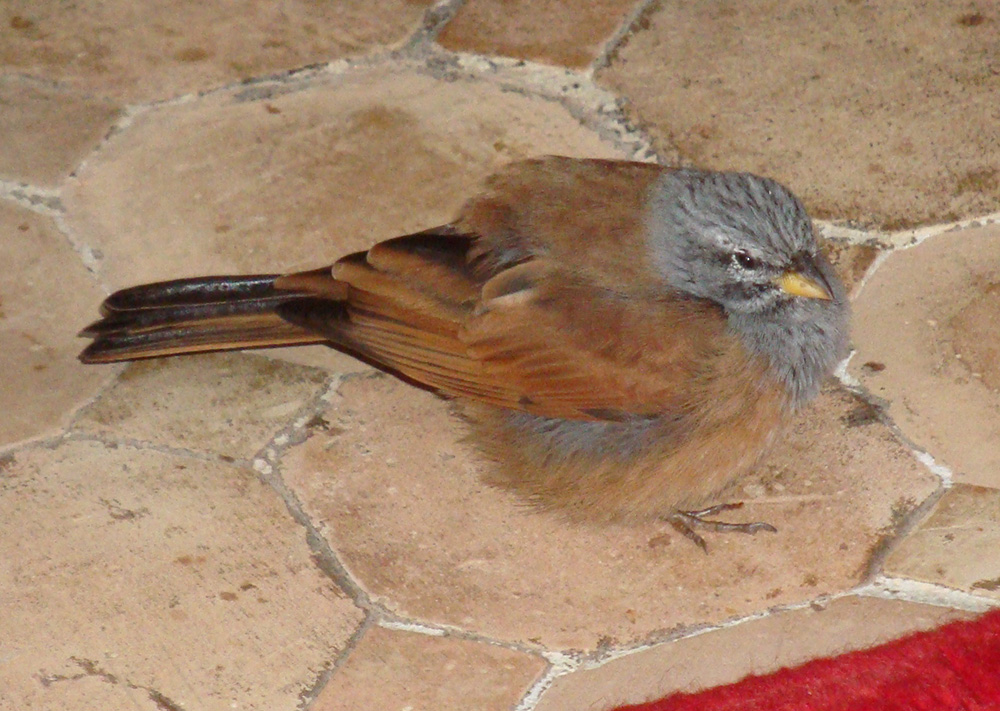 |
| Sparrow-sized house buntings are great opportunists |
The weather in Marrakech wasn’t behaving well. Local architecture, designed for coolness and for keeping marauders out, did not keep rain off. Despite the greyness outside though, there was plenty of colour in the labyrinthine souks – especially the sections specialising in the gaudy but grotesque tent-like djellaba many of the local women wear. There were stalls selling nothing but tassels; why though would folks need tassels of so many sizes and colours? Spice stalls (attended by squads of house buntings) displayed impossibly high heaps of various kinds of peppers, henna, saffron, dried roses, apricots, dates and many other intriguing but unidentifiable piles. Neighbouring stalls sold lucky Fatima hands or babouche: uncomfortable-looking shoes in reds, greens, blues and yellows, some with tassels, lots with glittery bits. There was sparkly brasswork; there was sumptuous inlay work and wonderful carvings. Sellers would try to tempt us with “Hello kaftan!” then taunt us for our reluctance saying, “Come in – no snakes inside!”
But there were snakes. I could have bought snake and leopard skins, live tortoises, song-birds, a baby crocodile, and stuffed fringe-toed lizards. When I paused to look at a parrot-cage full of sad-looking dehydrated chameleons, the hooded stall-holder said, “You want to eat, Madam? You can eat, with couscous!” This distracted me from the lecture I wanted to give him on his unacceptable trade.
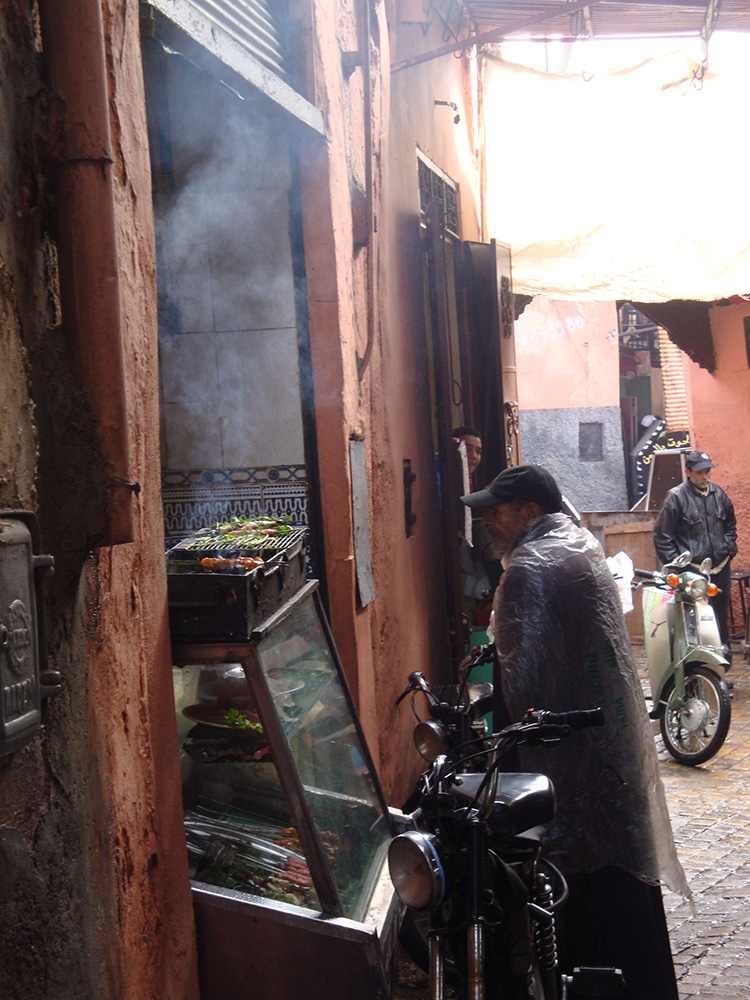
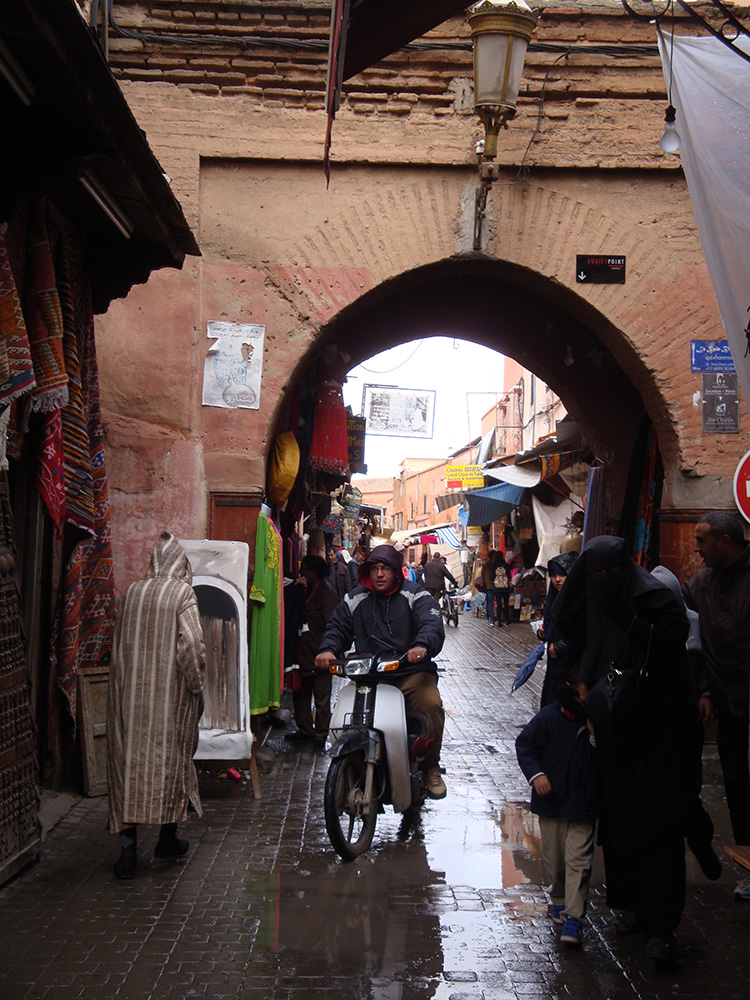
When, later, I read menus offering
batbout and
messaman I wondered if reptiles might be cooking in the kitchen, even if batbout turned out, innocently, only to be a kind of pita bread. For lunch that day I chose a vegetarian option and fed some of the couscous to the house buntings that hopped around our feet.
It was difficult to stop and stare anywhere in the souks: motor bikes and bicycles, cars, carts, donkeys and barrows of various sorts pushed through the tiny passages. December chilliness meant most local men wore cosy dressing-gown-like overcoats with hoods which gave the impression that Marrakech was hosting a wizards’ convention. Women wore the complete range – from burka to tight jeans. It was all most exotic and fascinating.
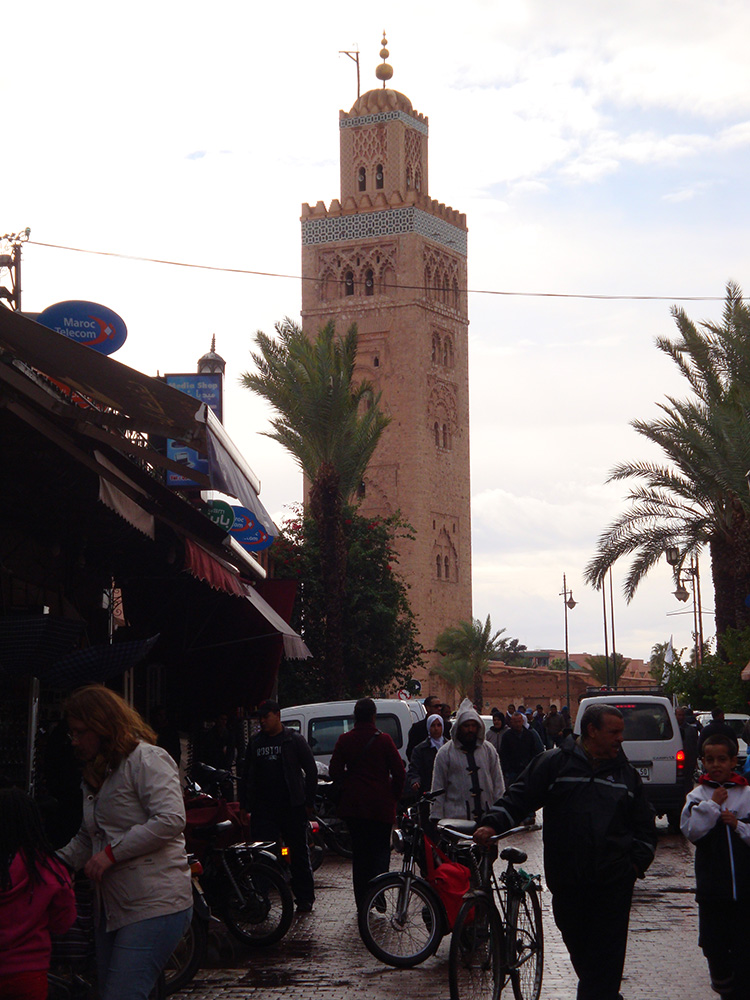 |
| the Koutoubia Mosque |
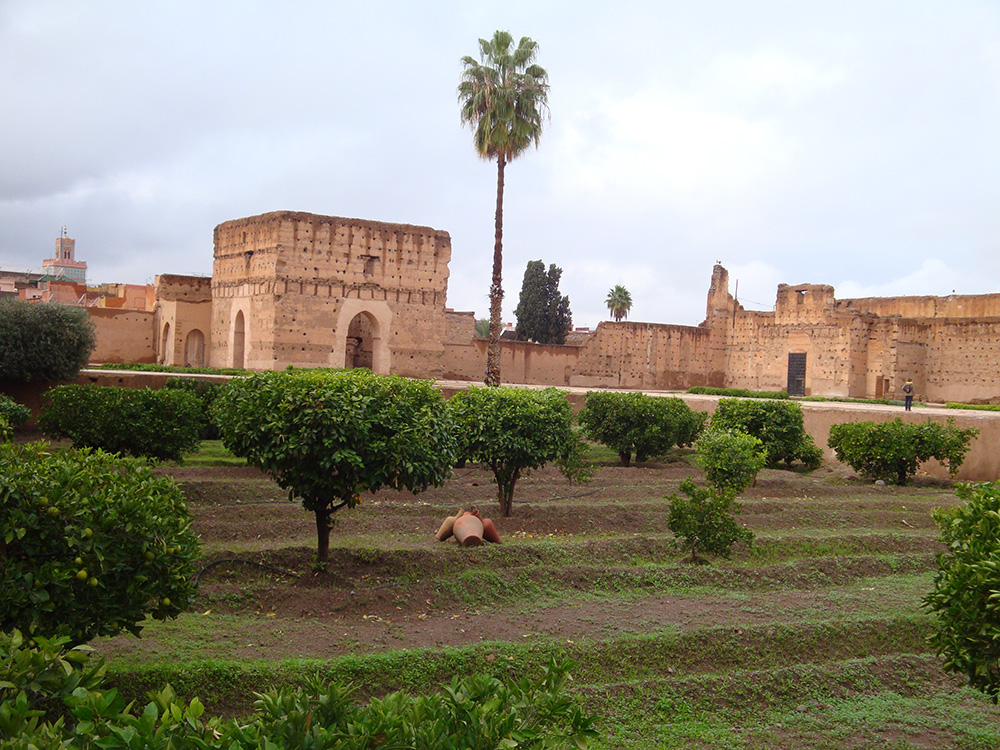 |
| Palais el Badi where the minbar can be seen (but not photographed) |
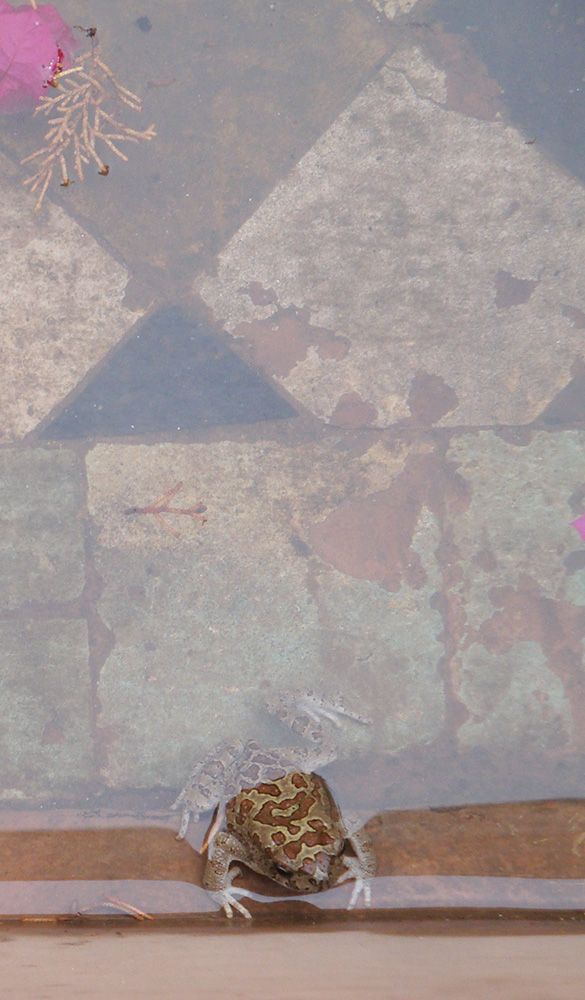 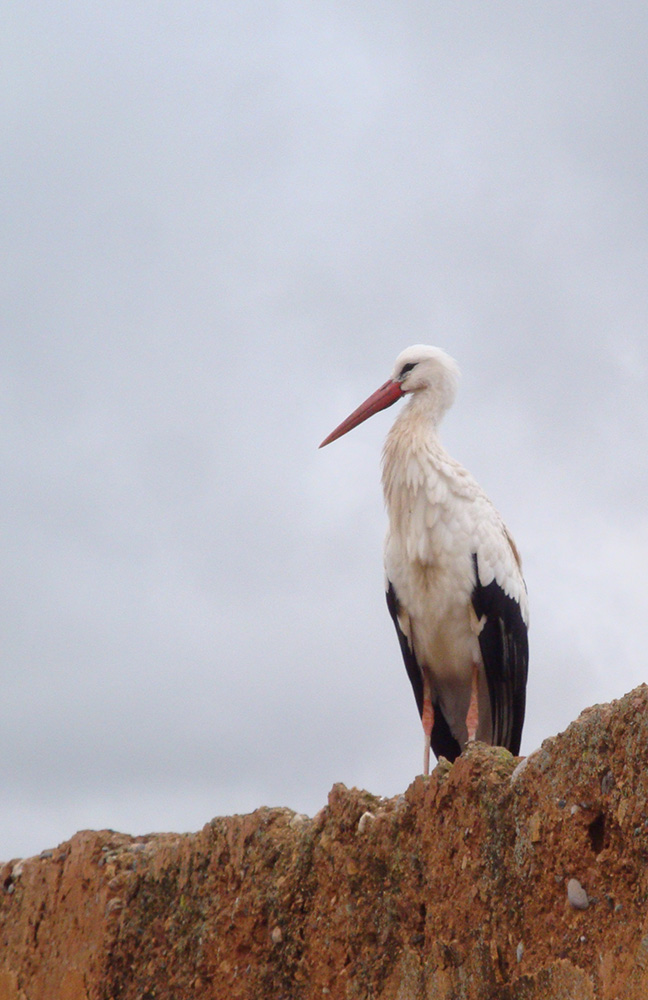 |
| Palais el Badi is now home to Mauritanian spotted toads, and storks |
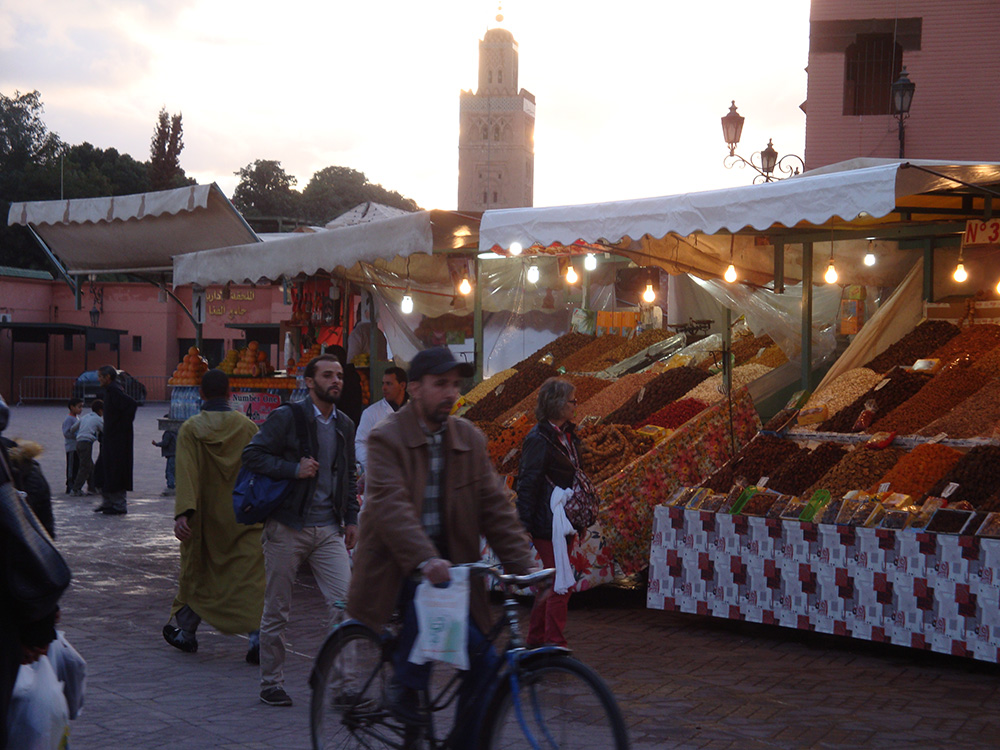 |
| Place Jemaa-al-Fna, where story-tellers, snake charmers and barbary apes entertain and there's plenty to eat. |
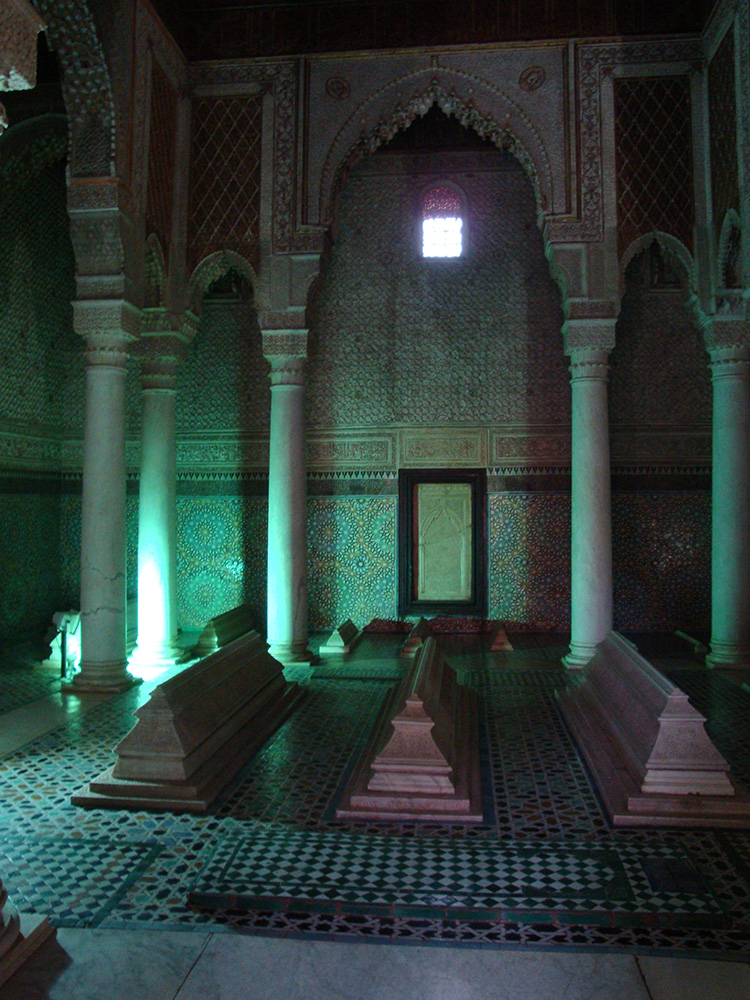 |
| Tombs of the Saadian Princes |
The city is dominated by the mighty tower of the Koutoubia Mosque and overlooked by the snow-covered Atlas Mountains. I tried to imagine Marrakech in its heyday. There are three most impressive sights within the five-metre-high mud city walls: the Ben Joussef Madrassa
(Islamic school) and the Saadian princes’ tombs which are both sixteenth century, and the wonderful 12
th century inlaid minbar pulpit. I liked the city a lot but I found it sad that these places were all museums, not part of a living culture. They echoed a richer, prouder age that celebrated Islam. Yet Islam in Morocco seems alive and well: the mosques and Friday prayers were well attended.
We had hoped to get up into the Atlas Mountains but flooding scuppered that idea so instead we headed west. The drive took us first beneath another ancient citadel, now occupied by the military, and on two hours to the coast and the "windy city" of Essaouira.
But that’s a subject for my next blog… coming soon.
Finally, thank you for feedback and editorial suggestions from my friends from Cambridge Writers,
especially Africa expert Francoise Hivernel.